#car history
Text

Weird car Wednesday… did you know, the Ford Probe was jointly developed with Mazda to debut as the new Mustang? When it leaked to the press, public backlash from enthusiasts forced Ford to go back to the drawing board. The Probe was so far into development that they had to bring the car to market.
#thecargays#cars#car blog#autos#sports car#classic car#ford probe#ford mustang#ford#probe#Mustang#car history#weird cars
128 notes
·
View notes
Text

#classic cars#vintage cars#cars#cars meme#beautiful#car community#automotive#automobile#car history#car show#car photography
99 notes
·
View notes
Text
OKAY WHAT THE FUCK I--
SO, ME AND MY SIBLINGS WERE LEAVING SCHOOL TO GO TO THE CAR AND LUNCH OUT
MY AUNT HAD TO GO TO WORK TODAY (SHE USUALLY DO IT FROM HOME) AND SHE TOOK THE CAR
AND AS WE WERE WALKING THERES A CAR THAT WAS JUST LIKE THE CAR THAT MY AUNT HAD (MY UNCLE RENTED A CAR TO PICK US UP AND ETC) AND THEN I SAW THE CAR DOING THAT BLINKING BLINK TO OPEN AND I THOUGHT MY UNCLE HAD OPENED IT FOR US TO GET IN AND SO I OPENED THE DOOR AND I WAS ABOUT TO GO IN WHEN MY UNCLE SAID "what are you doing????" AND I LOOKED IN AND THE MRS WAS LOOKING AT ME DISBELIEVED LIKE THIS "🤨" AND THEN I LEFT APOLOGIZING AND HER CHILDREN WERE BEHIND ME TO ENTER, THAT'S WHY SHE HAD OPENED THE CAR
AND LIKE-- I WASN'T ON PHONE AND WAS LOOKING STRAIGHT.
I'M DYING.

#history#huskerdust#funny stuff#funny#im going crazy#going insane#good story#car history#theyre so silly#sillyposting#silly goofy mood#im dying
25 notes
·
View notes
Text




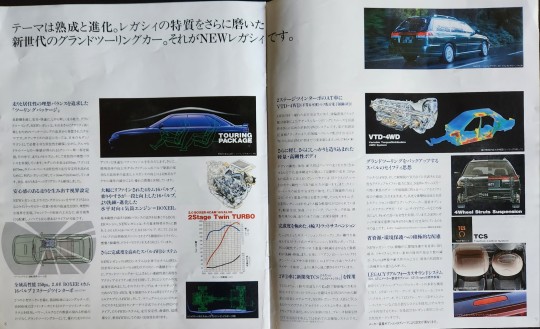
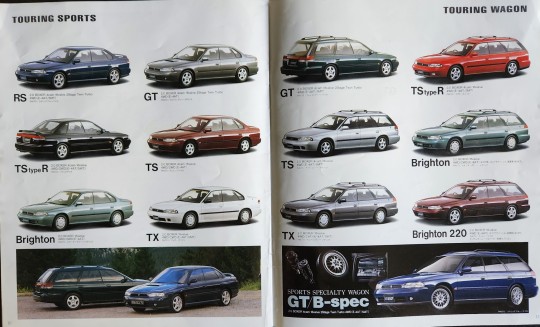

Complete Subaru dealership brochure for the all new 2nd gen. Legacy featuring Rod Stewart and a Barkley from 1993.
#subaru#legacy#90s japanese cars#jdm#dealer brochure#vintage advertising#car history#archeology#rod stewart#subaru barkley#2nd gen#bd5#bg5#awd twin turbo#legacy rs#gtb limited#my collection#mine#my scan#catalog#retro#vintage#subie#subienation
30 notes
·
View notes
Text

8 notes
·
View notes
Photo
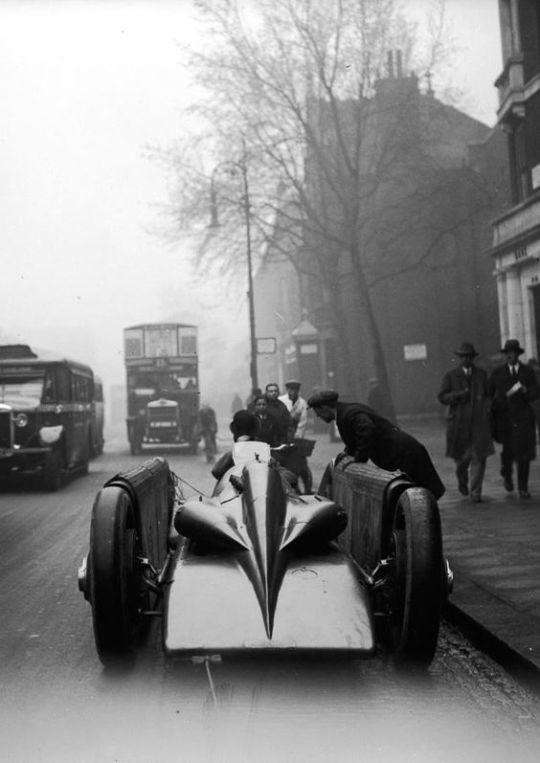


The Golden Arrow, a car that, in the 1920s, got the highest land speed ever recorded at 231 mph.
252 notes
·
View notes
Text

I honestly like the Camaro look on him more, just fits him better in my opinion!🐝
💛🖤💛
#history#transformers#bumblebee#camaro#volkswagen beetle#movie history#micheal bay#animation#herbie#universal studios#car history#chevrolet#movies#cars#volkswagen#hollywood history#1980s#vehicles#movie cars#universal studios orlando#chevrolet camaro#product placement#nickys facts
13 notes
·
View notes
Text

Jules Cheret
Poster advertising Benzo-Moteur Motor Oil Especially for Automobiles
1901
#jules cheret#belle epoque#commercial art#advertising art#automobile#car history#cars#auto advertising#car advertising#auto care#modern art#art history#aesthetictumblr#tumblraesthetic#tumblrpic#tumblrpictures#tumblr art#tumblrstyle#commercial artist#graphic design#graphic art#france#french painter
2 notes
·
View notes
Text
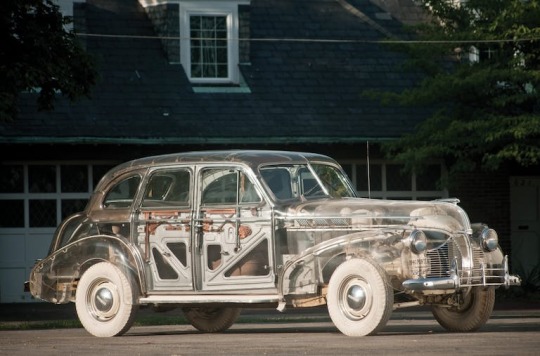
Timely Notice:
The management office wants to clarify that Agent X’s ghostly, nearly transparent 1940 Pontiac touring sedan is definitely NOT the famously missing Ghost Pontiac.
Absolutely not. Definitely not the Ghost.

Definitely a different car. Besides, Agent X’s Pontiac has glowing Neothane tires, and the missing vehicle’s tires are white.
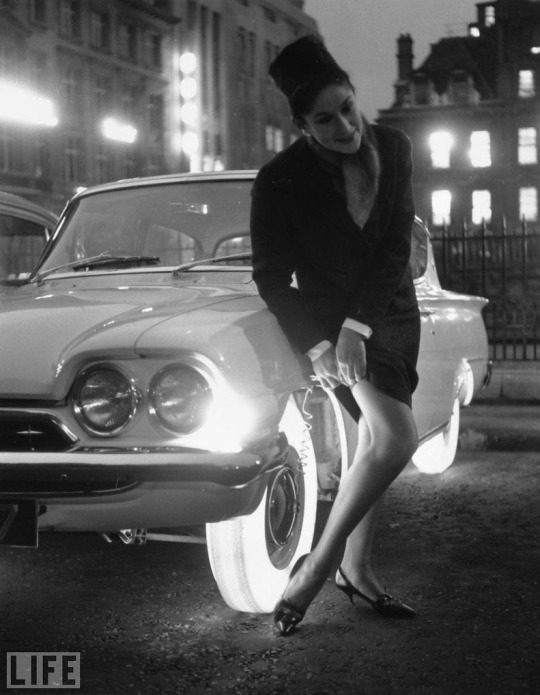
Now, management would appreciate it if we could all stop calling the police to report the rediscovery of a long lost auto icon.
These reports are unsubstantiated and hurtful. So hurtful, in fact, that every time the cops show up Agent X has to abruptly leave work for a mental health day.
We will just have get comfortable with the fact that, while the breathtaking 1940 Ghost Pontiac may never be found, it is surely in the hands of someone who loves it. Maybe even someone who tenderly washes it with ammonia-free cleaner in the Time Agency parking lot every Friday afternoon. Maybe.
V/r,
Agent Kay
#pontiac#automobile#vintage cars#vintage Pontiac#1940’s#classic cars#time travel#1940s cars#ghost Pontiac#history#automotive#automotive history#Neothane tires#goodyear#weird cars#car history#1900s
10 notes
·
View notes
Photo
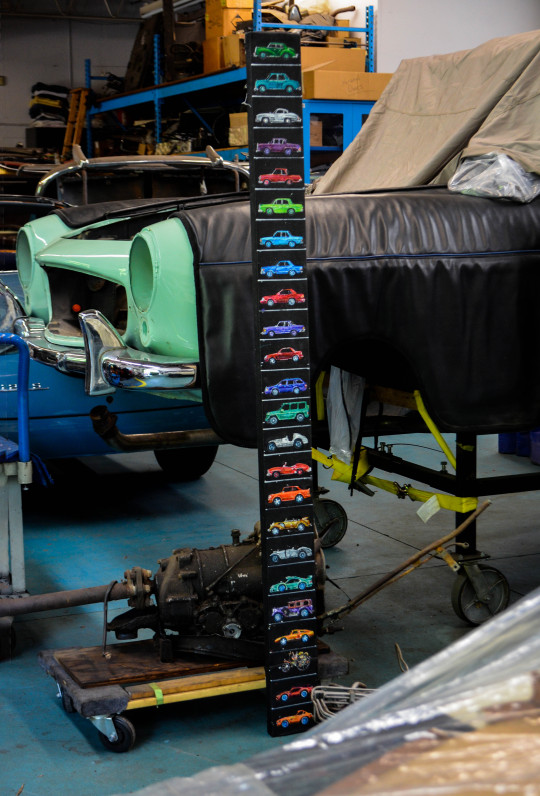


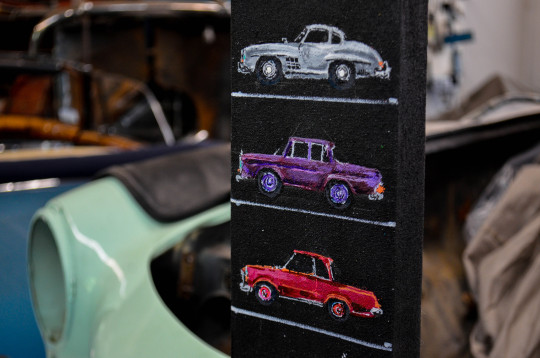
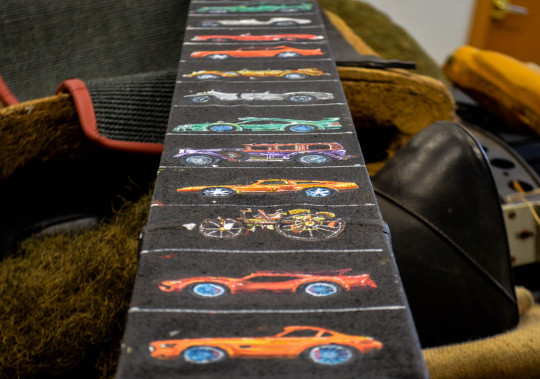

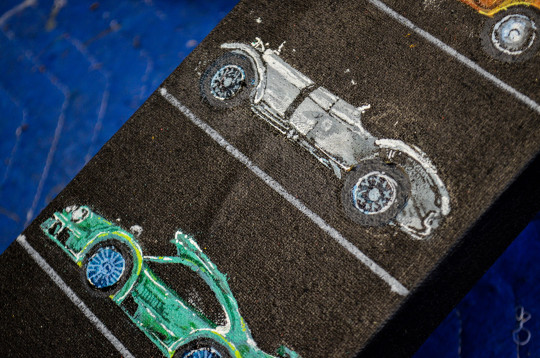

Icons.
4x72″
Acrylic on canvas.
#icons#classics#mercedes benz#classic benz#classic cars#mercedes icons#mercedes classic#Wisconsin History#iconic cars#legendary car#car history#art#fine art#paint#drawing every day#painting#draw#black forest#black forest benz
2 notes
·
View notes
Text
Lamborghini: The Man Behind The Legend (2022 Movie) Official Clip 'Dinner Argument' - Frank Grillo
Lamborghini: The Man Behind The Legend (2022 Movie) Official Clip 'Dinner Argument' – Frank Grillo
Lamborghini: The Man Behind The Legend – in theaters, on digital and on demand on Nov 18, 2022!
Subscribe to the LIONSGATE: YouTube Channel for the latest movie trailers, clips, and more:…

View On WordPress
#Biopic#car history#car race#Competition#crash#Drama Movie#enzo ferrari#ferrari#ferruccio lamborghini#Frank Grillo#Gabriel Byrne#geneva#geneva grand prix#grand prix#history#Lamborghini#lamborghini ferrari#luxury car history#luxury car race#luxury cars#mira sorvino#Official Clip#official trailer#race#rival#rivals#the grey#The Man Behind The Legend#Trailer#True Story
2 notes
·
View notes
Text
The Mitsubishi Pajero Evolutionary Timeline
Surely, the Mitsubishi Pajero is one of the most iconic SUVs ever made.

Call it a Shogun, a Raider, a Montero, or a Pajero, this is still a one-of-a-kind beast that once conquered the Dakar Rally like no other. Released back in 1983 with a Land Cruiser- Nissan Patrol motif, the first concept debuted at the Tokyo Auto Show back in 1973 - a Jeep wannabe concept with no doors, no roof but a utilitarian spirit to haul people up the hills.
The first concept didn’t go anywhere, as by that time Land Cruisers and Jeeps were the main themes when it came to off-road SUVs. Mitsubishi never stopped thriving with their dream Pajero and debuted the car in 1979 with a revised concept that was very similar to the Suzuki Samurai, and people loved it.
The first generation Pajero hit the market in 1983, and it was offered in so many engines and body options that there was a Pajero for anyone. After going in and out into adding more and more amenities to match Land Rovers and Toyota Land Cruisers, Mitsubishi has sadly discontinued the Pajero after a 39-year run and more than 3.3 million sales globally. This legendary off-road monster struggled to keep up with the modern demand. Today, we will take a closer look at its evolution over time and give you a final recap of this much- SUV.
First-Gen Pajero: 1983-1991
The first-generation Pajero debuted in 1983. The Pajero was aiming to target a larger consumer market, advertising the Pajero as the ultimate vehicle everyone needed. Interestingly enough, they proved themselves worthy by putting the first-gen Pajero on the Paris To Dakar Rally on stock internals - ending up 11th out of 385 contenders. It was a great success. As opposed to similar SUVs of the time, Mitsubishi was the first to introduce the Pajero with three roof configurations: standard, semi-high, and high-roof.
Five-door models became more popular to appeal to families. The first-gen Pajero could now offer a variety of configurations to either provide comfortable seating for 7, or generous storage areas. A three-door cloth-top version was also available with the first-generation Pajero. Engine options featured an array of turbo diesels or gas-powered V6s and inline-4s. The V6 is the most desirable engine for the first gen. The first-gen models could either be equipped with a five-speed manual or a four-speed automatic transmission.
Part-time four-wheel-drive, coil spring instead of conventional leaf springs, and adjustable suspension were some of the off-road features that took the Pajero ahead of the competition. After 8 years of production, it was time for Pajero to add more amenities, introducing the second generation in 1992.
Second Gen Pajero: 1992-1999
The second-gen Mitsubishi Pajero was released in 1992. Mitsubishi kept offering the Pajero in a three or four-door body style while handling buyers the choice of picking between a wide array of engine options - inline-fours, V6, and turbo diesels. Offered in a dual-tone colour scheme gave the Pajero better styling - a refreshed front fascia and a list of added amenities made the Pajero a much more desirable daily driver while retaining all the off-road spirit.
The biggest jump from the first-gen model was the upgrade to Super Select transmission. This gave drivers the choice of picking between rear-wheel drive or all-wheel-drive. The second-gen Pajero came with three differentials and a standard centre differential lock. All Pajero models came standard with a two-speed transfer case.
Four engine configurations were available for the second-generation Pajero. Diesel engines came in 2.8 and 2.5-litres. The 2.8TD engine made 125 Hp and 215 lb-ft of torque, while the smaller 2.5TD made 99 ponies and 177 lb-ft of torque.
Gas engines came in 3.0 or 3.5-litre V6 units. The latter produces 208 Hp and 221 lb-ft of torque, followed by the smaller 3.0-liter producing 150 Hp and 174 lb-ft of torque. A five-speed manual or 4-speed auto was available for the second generation. The 3.5-litre V6 was the fastest Pajero of the second generation, which did 0-60 mph in 10.5 seconds and reached a top speed of 114.9 mph.
Third-Generation Pajero: 2000-2006
By the year 2000, the earth had entered a new millennium and a very great focus was put on comfort, as people weren’t really taking their Pajeros/Monteros off the pavement. This was a big time for Mitsubishi as the third-gen underwent the biggest update so far into its production history. The ultimate SUV was now no longer built as a body-on-frame, but it went with unibody construction and independent suspensions in all four corners. The update promised an increased torsional rigidity and drastically improved cabin strength. At the time, Mitsubishi was chasing after the Land Rover Defender, Toyota Land Cruiser, and the rise of the Lexus LX.
Bigger and thicker was the name of the game back in 2000 as the Pajero was also buffed in interior size to accommodate more. Engine options were a 3.2-litre diesel producing 165 Hp and 275 lb-ft of torque or a 3.5-litre V6 gas engine producing 202 Hp and 235 lb-ft of torque.
This was up until Mitsubishi updated the third-gen model to a facelifted version in 2003. More opulent tech and revised engines with boosted power came in.
Pajero Sport: 2004-2008
Between 2004 and 2008 Mitsubishi happened to offer the Pajero as an “off-road pickup truck” that was more popular on the European market. This model looked like a station wagon, and it was based on the Mitsubishi L200, but it looked very different and more rugged from the latter. This was offered only as a 5-seater, but with a decent-sized bed. Mitsubishi switched from cloth-top two-door SUVs to strangely shaped pickup trucks.
These models were powered by a 2.5 TurboDiesel producing 115 Hp or a 3.0-litre V6 producing 170 Hp. The diesel ran up to 93mph, while the more powerful V6 gas engine ran to 109 mph max speed. This is a step-down from the usual SUV Pajero, and it was soon discontinued in 2008.
Four-Generation: 2006-2019
Mitsubishi gained back traction with its fourth generation, which has a reputation for reliability. The latter went back to body-on-frame construction and dropped the production of strangely shaped pickups to focus on what they did best with their first and second-gen models. A three-slot chromed grille was added, as were larger, taller headlights. It was available in three and five-door configurations. The former was only available with 5 seats, while the latter had 7 seats. The fourth-gen model was the only 4x4 vehicle in the world with a 4x4 on-demand system that could be driven as an all-wheel-drive vehicle thanks to its three differentials. The transmission was also upgraded to the Aisin-Warner A750F - also found in heavy-duty Toyota models of the time.
The fourth generation received a touch of new tech, as well as updated and more powerful engines. The new 3.8-litre V6 engine produced 244 hp and 243 lb-ft of torque. The 3.2-litre turbo diesel engine generated 197 Hp and 325 lb-ft of torque. This however was the very last generation for Mitsubishi, although many facelifts with updated interior and engine configurations came along. The exterior remained the same, and Mitsubishi struggled to get into the new SUV audience.
A final edition variant was put out on sale for only 1000 total Pajeros, ending a four-decade-long race of the Dakar Rally.
If you are on the hunt today to get yourself a Mitsubishi Pajero, we would recommend finding a first-gen model with a V6 and a cloth top. This could be the perfect project off-roader, although you might find newer models more opulent.
Fun Fact: The Mitsubishi Pajero holds the world record for winning the Paris-Dakar Rallye-raid, 12 times.
.
.
.
Sourced from https://www.hotcars.com/
2 notes
·
View notes
Text
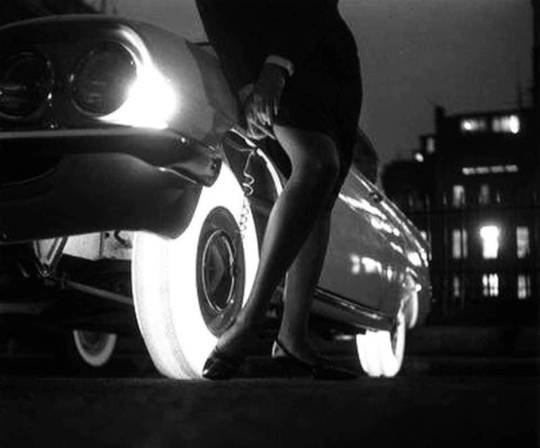
Goodyear developed a tire in 1961 using mounted light bulbs in the wheel rim to make them glow in the dark, but never went into production.
It was in the early 1960s, when Goodyear Tire & Rubber Co. decided to get their ‘cool’ on. They began developing what the referred to as ”the tire of tomorrow.” Goodyear scientists experimented by developing a translucent model with tiny light bulbs mounted inside the wheel rim.
They poured dyed compounds of Neothane synthetic rubber into special molds and heating molasses-like batches to 250 degrees. With synthetic rubber, they could dye the tires any color. Engineers ended up installing 18 tiny bulbs in each rim to make the wheels would shine in the dark and wiring devices supplied electricity to create a glow.
It was all controlled by the driver with a switch inside the car. The control could make the tires blink individually or together.
0 notes
Video
youtube
The 1985 Nissan MID4 Concept: The Car That Could've Rivaled Porsche and ...
#youtube#nissan#nissan mid4#mid4#concept car#classic car#retro car#retro#concept#cars#auto#car history
0 notes
Text
Monday Morning Report
How did we get here?
Cn we save our cities? Maybe. I think Heather knows the answer.
She’s right, only the people who live (and die young) can fix the cities. All the rest of us can do is to build siege line to keep the destruction contained. If it not, we’ll end up here:
One thing Obama, Carter, and Wilson all winghed about is that America is ungovernable. Well, yeah, they were right. It…
View On WordPress
0 notes
Text
This is why; CarHistoryUSA.com is one of the best sites that you can consider. In fact, they will help you with all the significant details about the used car.
#motor vehicle report#Vehicle#Used Car#Car History#Vehicle History#Car History Report#CarHistoryUSA.com#vehicle history reports
0 notes